: 2025
: 2024
: 2023
: 2022
: 2021
: 2020
: 2019
: 2018
: 2017
: 2016
: 2015
: 2014
: 2013
: 2012
: 2011
: 2010
: 2009
: 2008
: 2007
:



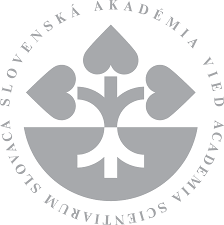


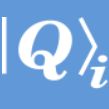
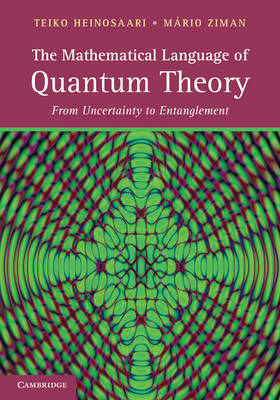
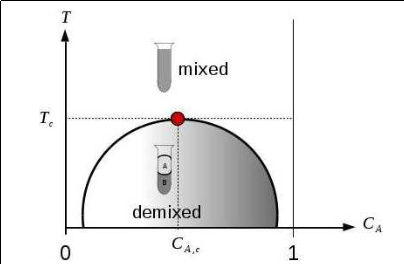 20.12.2014 Research publication
20.12.2014 Research publication
Critical fluctuations of a confined binary mixture
Exploiting the mapping between a binary mixture and the Ising model we have analyzed the critical fluctuations by means of the density-matrix renormalization group technique. The calculations have been carried out for a two-dimensional Ising strip subject to equally strong surface fields. It was found that the critical Casimir force has significantly different behavior on opposite sides of the capillary condensation line, especially below the critical temperature. It can be concluded that in real binary mixtures the most attractive force appears at temperatures near Tcand at reservoir compositions slightly away from the critical composition.
by
Małgorzata Zubaszewska, Andrej Gendiar, Tomasz Masłowski
Journal of Applied Mathematics and Computational Mechanics 13(4), 177-182 (2014) |+++| COQI (APVV-0646-10), DARG (VEGA-2/0074/12) |
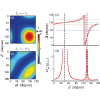 19.12.2014 Research publication
19.12.2014 Research publication
Spin-Relaxation Anisotropy in a GaAs Quantum Dot
We report that the electron spin-relaxation time T1 in a GaAs quantum dot with a spin-1/2 ground state has a 180° periodicity in the orientation of the in-plane magnetic field. This periodicity has been predicted for circular dots as being due to the interplay of Rashba and Dresselhaus spin orbit contributions. Different from this prediction, we find that the extrema in the T1 do not occur when the magnetic field is along the [110] and [11¯0] crystallographic directions. This deviation is attributed to an elliptical dot confining potential. The T1 varies by more than 1 order of magnitude when rotating a 3 T field, reaching about 80 ms for the optimal angle. We infer from the data that in our device the signs of the Rashba and Dresselhaus constants are opposite.
by
P. Scarlino, E. Kawakami, P. Stano, M. Shafiei, C. Reichl, W. Wegscheider, and L. M. K. Vandersypen
Phys. Rev. Lett. 113, 256802 (2014) |+++| |
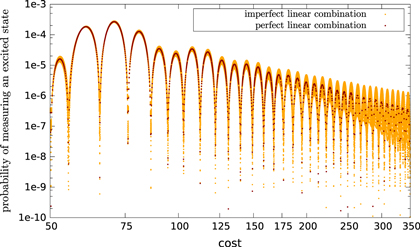 18.12.2014 Research publication
18.12.2014 Research publication
On the power of coherently controlled quantum adiabatic evolutions
We provide a new approach to adiabatic state preparation that uses coherent control and measurement to average different adiabatic evolutions in ways that cause their diabatic errors to cancel, allowing highly accurate state preparations using less time than conventional approaches. We show that this new model for adiabatic state preparation is polynomially equivalent to conventional adiabatic quantum computation by providing upper bounds on the cost of simulating such evolutions on a circuit-based quantum computer. Finally, we show that this approach is robust to small errors in the quantum control register and that the system remains protected against noise on the adiabatic register by the spectral gap.
by
Mária Kieferová a Nathan Wiebe
New Journal of Physics 16, 123034 (2014) |+++| QIMABOS (APVV-0808-12) |
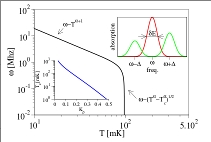 25.11.2014 Research publication
25.11.2014 Research publication
NMR response of nuclear-spin helix in quantum wires with hyperfine and spin-orbit interaction
We calculate the nuclear magnetic resonance (NMR) response of a quantum wire where at low temperature a self-sustained electron-nuclear spin order is created. Our model includes the electron mediated Ruderman-Kittel-Kasuya-Yosida (RKKY) exchange, electron spin-orbit interactions, nuclear dipolar interactions, and the static and oscillating NMR fields, all of which play an essential role. The paramagnet to helimagnet transition in the nuclear system is reflected in an unusual response: it absorbs at a frequency given by the internal RKKY exchange field, rather than the external static field, whereas the latter leads to a splitting of the resonance peak.
by
Peter Stano and Daniel Loss
Phys. Rev. B 90, 195312 (2014) |+++| QIMABOS (APVV-0808-12) |
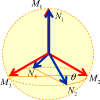 10.11.2014 Research publication
10.11.2014 Research publication
Optimal single-shot strategies for discrimination of quantum measurements
We study discrimination of m quantum measurements in the scenario when the unknown measurement with n outcomes can be used only once. We show that ancilla-assisted discrimination procedures provide a nontrivial advantage over simple (ancilla-free) schemes for perfect distinguishability and we prove that inevitably m≤n. We derive necessary and sufficient conditions of perfect distinguishability of general binary measurements. We show that the optimization of the discrimination of projective qubit measurements and their mixtures with white noise is equivalent to the discrimination of specific quantum states. In particular, the optimal protocol for discrimination of projective qubit measurements with fixed failure rate (exploiting maximally entangled test state) is described. While minimum-error discrimination of two projective qubit measurements can be realized without any need of entanglement, we show that discrimination of three projective qubit measurements requires a bipartite probe state. Moreover, when the measurements are not projective, the non-maximally entangled test states can outperform the maximally entangled ones. Finally, we rephrase the unambiguous discrimination of measurements as quantum key distribution protocol.
by
Michal Sedlák and Mário Ziman
Phys. Rev. A 90, 052312 (2014) |+++| QUICOST (VEGA 2/0125/13), COQI (APVV-0646-10) |
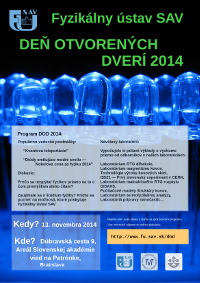 13.11.2014 Popularization
13.11.2014 Popularization
Deň otvorených dverí FÚ SAV Že neviete, čo vedci v akadémii robia? Získajte informácie z prvej ruky. Príďte sa za nami pozrieť do našej práce štvrtok 13. novembra v čase medzi 9:00-15:00. V našej seminárnej miestnosti (budova QUTE, 1. poschodie) budete môcť zúčastniť otvorenej diskusie na témy nám blízke (kvantové počítače, kryptografia, kvantová fyzika), prípadne radi odpovieme (ak budeme vedieť) na otázky. Budete si môcť pozrieť experimentálne zariadenie slúžiace pre supravodivé kvantové počítanie. V auditóriu QUTE si budete môcť vypočuť prednášky o modrých LED diódach (tohtoročná Nobelova cena) a o kvantovej teleportácii. Viac informácii o programe nájdete na týchto stránkach. Všetci ste vítaní. |
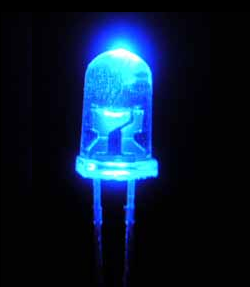 10.10.2014 Research
10.10.2014 Research
Physics Nobel prize 2014 for blue Light-Emitting-Diode. The Nobel Prize in Physics 2014 was awarded jointly to Isamu Akasaki, Hiroshi Amano and Shuji Nakamura "for the invention of efficient blue light-emitting diodes which has enabled bright and energy-saving white light sources". Congratulations. See more details here ΞΞΞ . |
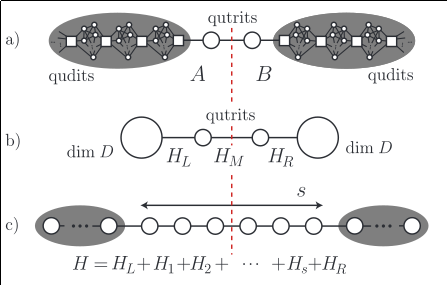 21.10.2014 Research publication
21.10.2014 Research publication
Local tests of global entanglement and a counterexample to the generalized area law
We introduce a technique for applying quantum expanders in a distributed fashion, and use it to solve two basic questions: testing whether a bipartite quantum state shared by two parties is the maximally entangled state and disproving a generalized area law. In the process these two questions which appear completely unrelated turn out to be two sides of the same coin. Strikingly in both cases a constant amount of resources are used to verify a global property.
by
Dorit Aharonov, Aram W. Harrow, Zeph Landau, Daniel Nagaj, Mario Szegedy, Umesh Vazirani
Proceedings of FOCS 2014, 246-255 (2014) |+++| QIMABOS (APVV-0808-12) |
 10.09.2014 Research publication
10.09.2014 Research publication
Helical nuclear spin order in a strip of stripes in the Quantum Hall regime
We investigate nuclear spin effects in a two-dimensional electron gas in the quantum Hall regime modeled by a weakly coupled array of interacting quantum wires. We show that the presence of hyperfine interaction between electron and nuclear spins in such wires can induce a phase transition, ordering electrons and nuclear spins into a helix in each wire. Electron-electron interaction effects, pronounced within the one-dimensional stripes, boost the transition temperature up to tens to hundreds of millikelvins in GaAs. We predict specific experimental signatures of the existence of nuclear spin order, for instance for the resistivity of the system at transitions between different quantum Hall plateaus.
by
Tobias Meng, Peter Stano, Jelena Klinovaja, Daniel Loss
Eur. Phys. J. B 87, 203 (2014) |+++| QIMABOS (APVV-0808-12) |
 05.09.2014 Research publication
05.09.2014 Research publication
Spin Hot Spots in Single-Electron GaAs-based Quantum Dots
Spin relaxation of a single electron in a weakly coupled double quantum dot is calculated numerically. The phonon assisted spin flip is allowed by the presence of the linear and cubic spin-orbit couplings and nuclear spins. The rate is calculated as a function of the interdot coupling, the magnetic field strength and orientation, and the dot bias. In an in-plane magnetic field, the rate is strongly anisotropic with respect to the magnetic field orientation, due to the anisotropy of the spin-orbit interactions. The nuclear spin influence is negligible. In an out-of-plane field, the nuclear spins play a more important role due selection rules imposed on the spin-orbit couplings. Our theory shows a very good agreement with data measured in [Srinivasa, et al., PRL 110, 196803 (2013)], allowing us to extract information on the linear spin-orbit interactions strengths in that experiment. We estimate that they correspond to spin-orbit lengths of about 5-15 μm.
by
Martin Raith, Thomas Pangerl, Peter Stano, Jaroslav Fabian
Phys. Status Solidi B 251, 1924 (2014) |+++| COQI (APVV-0646-10) |
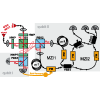 15.08.2014 Research publication
15.08.2014 Research publication
Optimal entanglement-assisted discrimination of quantum measurements
We investigate optimal discrimination between two projective single-qubit measurements in a scenario where the measurement can be performed only once. We consider general setting involving a tunable fraction of inconclusive outcomes and we prove that the optimal discrimination strategy requires an entangled probe state for any nonzero rate of inconclusive outcomes. We experimentally implement this optimal discrimination strategy for projective measurements on polarization states of single photons. Our setup involves a real-time electrooptical feed-forward loop which allows us to fully harness the benefits of entanglement in discrimination of quantum measurements. The experimental data clearly demonstrate the advantage of entanglement-based discrimination strategy as compared to unentangled single-qubit probes.
by
M. Miková, M. Sedlák, I. Straka, M. Mičuda, M. Ziman, M. Ježek, M. Dušek, and J. Fiurášek
Phys. Rev. A 90, 022317 (2014) |+++| COQI (APVV-0646-10), QUICOST (VEGA 2/0125/13), COST Action MP1006 |
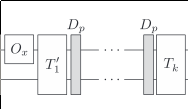 24.07.2014 Research publication
24.07.2014 Research publication
Fault-ignorant quantum search
We investigate the problem of quantum searching on a noisy quantum computer. Taking a fault-ignorant approach, we analyze quantum algorithms that solve the task for various different noise strengths, which are possibly unknown beforehand. We prove lower bounds on the runtime of such algorithms and thereby find that the quadratic speedup is necessarily lost (in our noise models). However, for low but constant noise levels the algorithms we provide (based on Grover's algorithm) still outperform the best noiseless classical search algorithm.
by
Péter Vrana, David Reeb, Daniel Reitzner and Michael M Wolf
New J. Phys. 16, 073033 (2014) |+++| NONE |
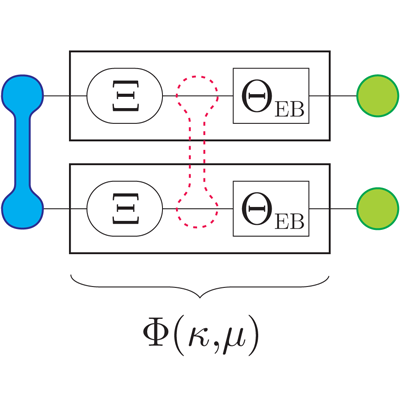 23.07.2014 Pop
Scientists find way to maintain quantum entanglement in amplified signals
23.07.2014 Pop
Scientists find way to maintain quantum entanglement in amplified signals
News from ScienceDaily portal: Physicists Sergei Filippov and Mario Ziman have found a way to preserve quantum entanglement of particles passing through an amplifier and, conversely, when transmitting a signal over long distances. Details are provided in an article published in the journal Physical Review A (see below). Similar press release appeared on different web portals : :: MIPT news :: Photonics online :: Phys.org :: Matter News :: Hlas Ruska :: Atominfo :: rozhlas.cz :: |
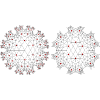 22.07.2014 Research publication
22.07.2014 Research publication
Mean-field universality class induced by weak hyperbolic curvatures
Order-disorder phase transition of the ferromagnetic Ising model is investigated on a series of two-dimensional lattices that have negative Gaussian curvatures. Exceptional lattice sites of coordination number seven are distributed on the triangular lattice, where the typical distance between the nearest exceptional sites is proportional to an integer parameter n. Thus, the corresponding curvature is asymptotically proportional to −n−2. Spontaneous magnetization and specific heat are calculated by means of the corner transfer matrix renormalization group method. For all the finite n cases, we observe the mean-field-like phase transition. It is confirmed that the entanglement entropy at the transition temperature is linear in (c/6)lnn, where c=1/2 is the central charge of the Ising model. The fact agrees with the presence of the typical length scale n being proportional to the curvature radius.
by
Andrej Gendiar, Michal Daniška, Roman Krčmár, and Tomotoshi Nishino
Phys. Rev. E 90, 012122 |+++| SIQS (FP7-ICT 2013-600645), QIMABOS (APVV-0808-12), meta-QUTE (NFP26240120022), DARG (VEGA-2/0074/12) |
 02.07.2014 Research publication (PRA Editor's suggestion)
02.07.2014 Research publication (PRA Editor's suggestion)
Entanglement sensitivity to signal attenuation and amplification
We analyze general laws of continuous-variable entanglement dynamics during the deterministic attenuation and amplification of the physical signal carrying the entanglement. These processes are inevitably accompanied by noises, so we find fundamental limitations on noise intensities that destroy entanglement of Gaussian and non-Gaussian input states. The phase-insensitive amplification Φ1⊗Φ2⊗⋯ΦN with the power gain ki≥2 (≈3 dB, i=1,...,N) is shown to destroy entanglement of any N-mode Gaussian state even in the case of quantum-limited performance. In contrast, we demonstrate non-Gaussian states with the energy of a few photons such that their entanglement survives within a wide range of noises beyond quantum-limited performance for any degree of attenuation or gain. We detect entanglement preservation properties of the channel Φ1⊗Φ2, where each mode is deterministically attenuated or amplified. Gaussian states of high energy are shown to be robust to very asymmetric attenuations, whereas non-Gaussian states are at an advantage in the case of symmetric attenuation and general amplification. If Φ1=Φ2, the total noise should not exceed 0.5(1+k2)1/2 to guarantee entanglement preservation.
by
Sergey N. Filippov and Mário Ziman
Phys. Rev. A 90, 010301(R) (2014) |+++| QIMABOS (APVV-0808-12) |
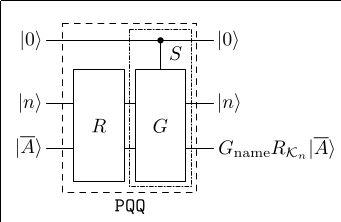 23.06.2014 Research publication
23.06.2014 Research publication
Two notes on Grover’s search: Programming and discriminating
In this work we address two questions concerning Grover’s algorithm. In the first part we give an answer to the question on how to employ Grover’s algorithm for actual search over database. We introduce a quantum model of an unordered phone book (quantum database) with programmable queries to search in the phone book either for a number or for a name. In the second part we investigate how successful the algorithm can be if the number of elements of the database is not known precisely. This question reduces to analysis of the distinguishability of states occurring during Grover’s algorithm. We found that using an unambiguous discrimination scheme even a seemingly good guess that is close to the optimal one, can result in a rather small success rate.
by
Daniel Reitzner and Mário Ziman
The European Physical Journal Plus 129, 128 (2014) |+++| QIMABOS (APVV-0808-12), COST Action MP1006 |
 03.06.2014 Research publication
03.06.2014 Research publication
Distance to boundary and minimum-error discrimination
We introduce the concept of boundariness capturing the most efficient way of expressing a given element of a convex set as a probability mixture of its boundary elements. In other words, this number measures (without the need of any explicit topology) how far the given element is from the boundary. It is shown that one of the elements from the boundary can be always chosen to be an extremal element. We focus on evaluation of this quantity for quantum sets of states, channels, and observables. We show that boundariness is intimately related to (semi)norms that provide an operational interpretation of this quantity. In particular, the minimum error probability for discrimination of a pair of quantum devices is lower bounded by the boundariness of each of them. We proved that for states and observables this bound is saturated and conjectured this feature for channels. The boundariness is zero for infinite-dimensional quantum objects as in this case all the elements are boundary elements.
by
Erkka Haapasalo, Michal Sedlák, and Mário Ziman
Phys. Rev. A 89, 062303 (2014) |+++| QUICOST (VEGA 2/0125/13), COST Action MP1006 |
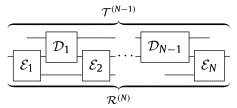 16.05.2014 Research publication
16.05.2014 Research publication
Optimal processing of reversible quantum channels
We consider the general problem of the optimal transformation of N uses of (possibly different) unitary channels to a single use of another unitary channel in any finite dimension. We show how the optimal transformation can be fully parallelized, consisting in a preprocessing channel followed by a parallel action of all the N unitaries and a final postprocessing channel. Our techniques allow to achieve an exponential reduction in the number of the free parameters of the optimization problem making it amenable to an efficient numerical treatment. Finally, we apply our general results to find the analytical solution for special cases of interest like the cloning of qubit phase gates.
by
Alessandro Bisio, Giacomo Mauro D'Ariano, Paolo Perinotti, Michal Sedlák
Physics Letters A 378, p. 1797–1808 (2014) |+++| COST Action MP1006, COQI (APVV-0646-10), QUICOST (VEGA 2/0125/13) |
 15.05.2014 Research publication
15.05.2014 Research publication
Coexistence of effects from an algebra of two projections
The coexistence relation of quantum effects is a fundamental structure, describing those pairs of experimental events that can be implemented in a single setup. Only in the simplest case of qubit effects is an analytic characterization of coexistent pairs known. We generalize the qubit coexistence characterization to all pairs of effects in arbitrary dimensions that belong to the von Neumann algebra generated by two projections. We demonstrate the presented mathematical machinery by several examples, and show that it covers physically relevant classes of effect pairs.
by
Teiko Heinosaari, Jukka Kiukas and Daniel Reitzner
J. Phys. A 47, 225301 (2014) |+++| |
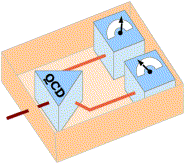 14.05.2014 Research publication
14.05.2014 Research publication
Maximally incompatible quantum observables
The existence of maximally incompatible quantum observables in the sense of a minimal joint measurability region is investigated. Employing the universal quantum cloning device it is argued that only infinite dimensional quantum systems can accommodate maximal incompatibility. It is then shown that two of the most common pairs of complementary observables (position and momentum; number and phase) are maximally incompatible.
by
Teiko Heinosaari, Jussi Schultz, Alessandro Toigo, Mario Ziman
Physics Letters A 378, Issues 24–25, p. 1695–1699 (2014) |+++| TEQUDE (VEGA 2/0127/11), COST Action MP1006 |
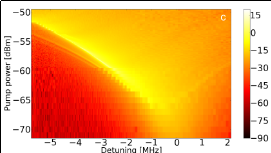 25.04.2014 Research publication
25.04.2014 Research publication
Parametric amplification by coupled flux qubits
We report parametric amplification of a microwave signal in a Kerr medium formed from superconducting qubits. Two mutually coupled flux qubits, embedded in the current antinode of a superconducting coplanar waveguide resonator, are used as a nonlinear element. Shared Josephson junctions provide the qubit-resonator coupling, resulting in a device with a tunable Kerr constant (up to 3 × 10−3) and a measured gain of about 20 dB. This arrangement represents a unit cell which can be straightforwardly extended to a quasi one-dimensional quantum metamaterial with large tunable Kerr nonlinearity, providing a basis for implementation of wide-band travelling wave parametric amplifiers.
by
M. Rehák, P. Neilinger, M. Grajcar, G. Oelsner, U. Hübner, E. Il'ichev, and H.-G. Meyer
Appl. Phys. Lett. 104, 162604 (2014) |+++| QUTE, metaQUTE |
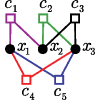 24.03.2014 Research publication
24.03.2014 Research publication
Satisfiability-unsatisfiability transition in the adversarial satisfiability problem
Adversarial satisfiability (AdSAT) is a generalization of the satisfiability (SAT) problem in which two players try to make a Boolean formula true (resp. false) by controlling their respective sets of variables. AdSAT belongs to a higher complexity class in the polynomial hierarchy than SAT, and therefore the nature of the critical region and the transition are not easily parallel to those of SAT and worthy of independent study. AdSAT also provides an upper bound for the transition threshold of the quantum satisfiability problem (QSAT). We present a complete algorithm for AdSAT, show that 2-AdSAT is in P, and then study two stochastic algorithms (simulated annealing and its improved variant) and compare their performances in detail for 3-AdSAT. Varying the density of clauses α we claim that there is a sharp SAT-UNSAT transition at a critical value whose upper bound is αc≲1.5, suggesting a much stricter upper bound for the QSAT transition than those previously found.
by
Marco Bardoscia, Daniel Nagaj, and Antonello Scardicchio
Phys. Rev. E 89, 032128 (2014) |+++| COQI (APVV-0646-10) |
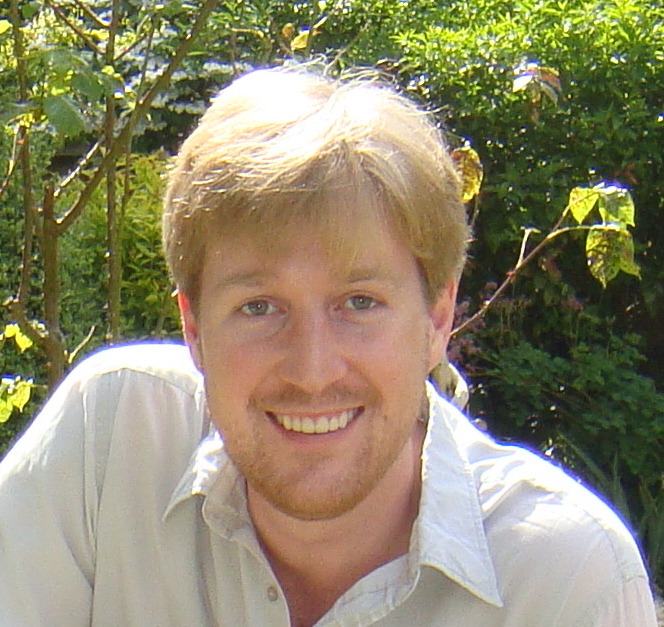 17.03.2014 Seminar QUTE
17.03.2014 Seminar QUTE
Cosmos and Mind A lecture given by astronomer Daniel Darg from Oxford University will take place on Tuesday 25/03/2014 (time to be announed) at QUTE Auditorium (Dúbravská cesta 9, Slovaka Academy of Sciences Campus, Bratislava - Patrónka). Everyone is welcome. |
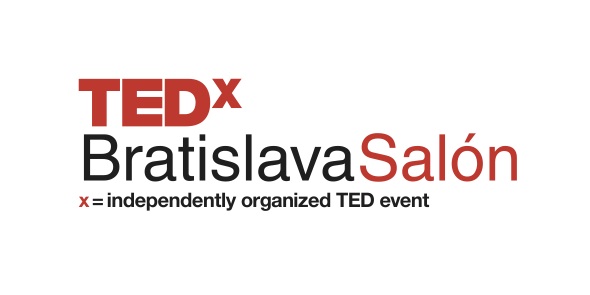 17.03.2014 TedEx Bratislava Saloon
17.03.2014 TedEx Bratislava Saloon
Can Science Be Democritized? A lecture by astronomer Daniel Darg from Oxford University will take place on Monday 24/03/2014 (18:00) at Open Science Foundations Gallery (Baštová 5, Bratislava). The discussion will be moderated by Vladimír Bužek. |
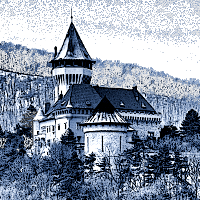 15.03.2014 Summer school
15.03.2014 Summer school
Qute-Europe Summer School 2014 (QESS 2014) Starting your graduate in quantum information science and looking for right move for your PhD study? Come to our school on current challenges and elementary paradigms of quantum information processing. The school is organized from 18-28 August in charming Smolenice castle (Slovakia). To learn more details visit the school website http://quantum.physics.sk/conf/qess2014/. Support (provided by QUTE-EUROPE Coordination Action) is available and early deadline is 15/04/2014. |
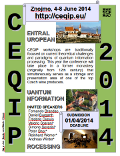 21.02.2014 Conference
21.02.2014 Conference
CEQIP 2014 This year in Znojmo (Czech republic), 5-8 June. Traditionally, excellent speakers, unforgettable athmosphere, delicious food and wine testing, unbreakable cipher game, adrenalyn underground experience, etc. Check more details on workshop website http://ceqip.eu/. Deadline for submission is April, 1st, seriously :-) |
 18.02.2014 Research publication
18.02.2014 Research publication
Electric control of tunneling energy in graphene double dots
We theoretically investigate the spectrum of a single electron double quantum dot, defined by top gates in a graphene with a substrate-induced gap. We examine the effects of electric and magnetic fields on the spectrum of localized states, focusing on the tunability of the interdot coupling. We find that the substrate-induced gap allows for electrostatic control, with some limitations that for a fixed interdot distance, the interdot coupling cannot be made arbitrarily small due to the Klein tunneling. On the other hand, the proximity of the valence band in graphene allows for new regimes, such as an npn double dot, which have no counterparts in GaAs.
by
Martin Raith, Christian Ertler, Peter Stano, Michael Wimmer, and Jaroslav Fabian
Phys. Rev. B 89, 085414 (2014) |+++| COQI (APVV-0646-10), QUTE |
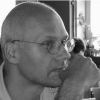 09.02.2014 Popular talk
09.02.2014 Popular talk
Ichtyosaurus in ZOO (or resonator quantum electrodynamics for curious) A popular lecture given by Prof. Vladimír Bužek at Bratislava Scientific Patisserie for high school students on current challenges in quantum physics. This event will take place on Tuesday 18/02/2014 (9:00) in Slovak Center for scientific and technological information. You can watch the presentation here http://ncpvat.cvtisr.sk/buxus/generate_page.php?page_id=2129. |
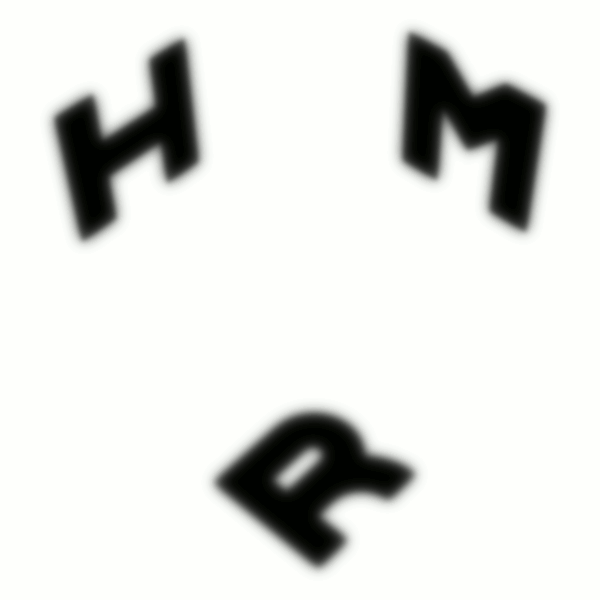 12.01.2014 Web news
12.01.2014 Web news
A new blogspace Quantum Incompatibility run by our secret incompatibility friends is open. As it says from now on, "quantum" and "incompatibility" are not to be feared. Whatever. Here it is http://quincomp.wordpress.com/. Read, enjoy and contribute. |
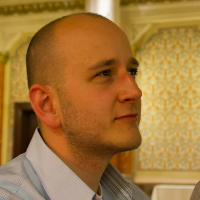 03.01.2014 Group update
03.01.2014 Group update
Daniel Reitzner was awarded Humboldt stipend and left to stay approximatively six months in the group of Prof. Mark Hillery in New York. All the best! |


